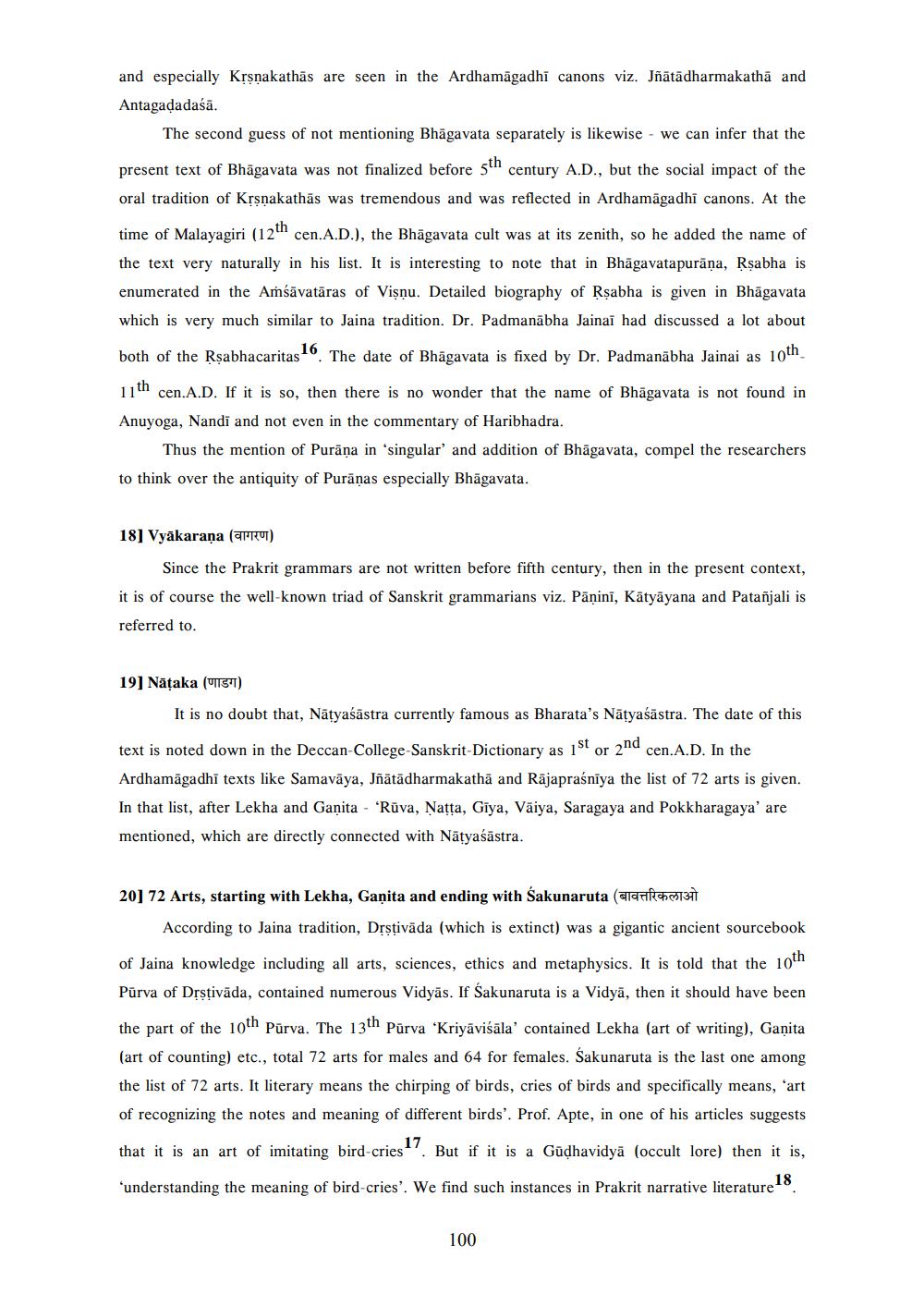________________
and especially Krsnakathās are seen in the Ardhamāgadhi canons viz. Jñātādharmakathā and Antagadadaśā.
The second guess of not mentioning Bhāgavata separately is likewise - we can infer that the
present text of Bhāgavata was not finalized before 5th century A.D., but the social impact of the oral tradition of Krsnakathās was tremendous and was reflected in Ardhamāgadhi canons. At the
time of Malayagiri (12" cen.A.D.), the Bhāgavata cult was at its zenith, so he added the name of the text very naturally in his list. It is interesting to note that in Bhāgavatapurāna, Rşabha is enumerated in the Amśāvatāras of Visnu. Detailed biography of Rsabha is given in Bhāgavata which is very much similar to Jaina tradition. Dr. Padmanābha Jainai had discussed a lot about
both of the Rsabhacaritas". The date of Bhāgavata is fixed by Dr. Padmanābha Jainai as 10th
11th cen.A.D. If it is so, then there is no wonder that the name of Bhāgavata is not found in Anuyoga, Nandi and not even in the commentary of Haribhadra.
Thus the mention of Purāņa in singular' and addition of Bhāgavata, compel the researchers to think over the antiquity of Purānas especially Bhagavata.
18] Vyākaraṇa (CTU)
Since the Prakrit grammars are not written before fifth century, then in the present context, it is of course the well-known triad of Sanskrit grammarians viz. Pāņinī, Kātyāyana and Patañjali is
referred to
19] Nātaka (5)
It is no doubt that, Nāțyaśāstra currently famous as Bharata's Nātyaśāstra. The date of this text is noted down in the Deccan College-Sanskrit Dictionary as 1 or 2nd cen.A.D. In the Ardhamāgadhi texts like Samavāya, Jñātādharmakathā and Rājapraśnīya the list of 72 arts is given. In that list, after Lekha and Ganita - "Rūva, Natta, Giya, Vāiya, Saragaya and Pokkharagaya' are mentioned, which are directly connected with Nātyaśāstra.
20] 72 Arts, starting with Lekha, Gaạita and ending with Śakunaruta (aranfic 1377
According to Jaina tradition, Drstivāda (which is extinct) was a gigantic ancient sourcebook
of Jaina knowledge including all arts, sciences, ethics and metaphysics. It is told that the 10 Pūrva of Drstivāda, contained numerous Vidyās. If Sakunaruta is a Vidyā, then it should have been
the part of the 10th Pūrva. The 13th Pūrva "Kriyāviśāla' contained Lekha (art of writing), Ganita (art of counting) etc., total 72 arts for males and 64 for females. Sakunaruta is the last one among the list of 72 arts. It literary means the chirping of birds, cries of birds and specifically means, 'art of recognizing the notes and meaning of different birds'. Prof. Apte, in one of his articles suggests
that it is an art of imitating bird-cries". But if it is a Gūdhavidyā (occult lore) then it is,
‘understanding the meaning of bird-cries'. We find such instances in Prakrit narrative literature
100




